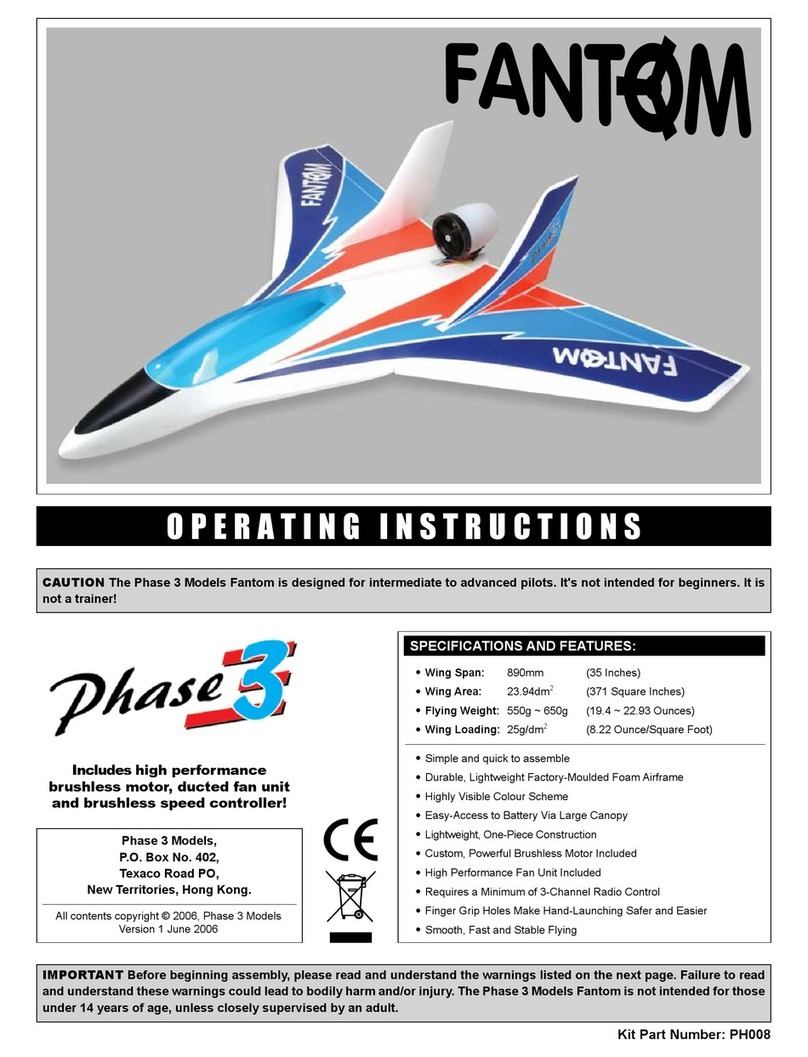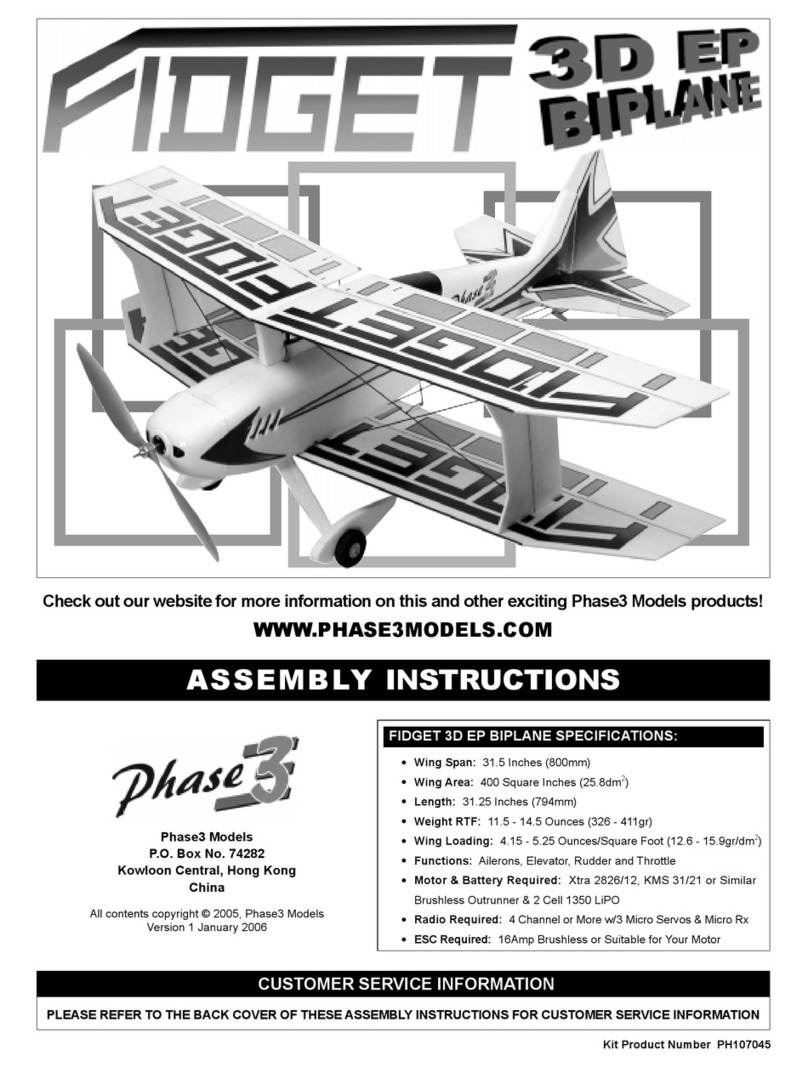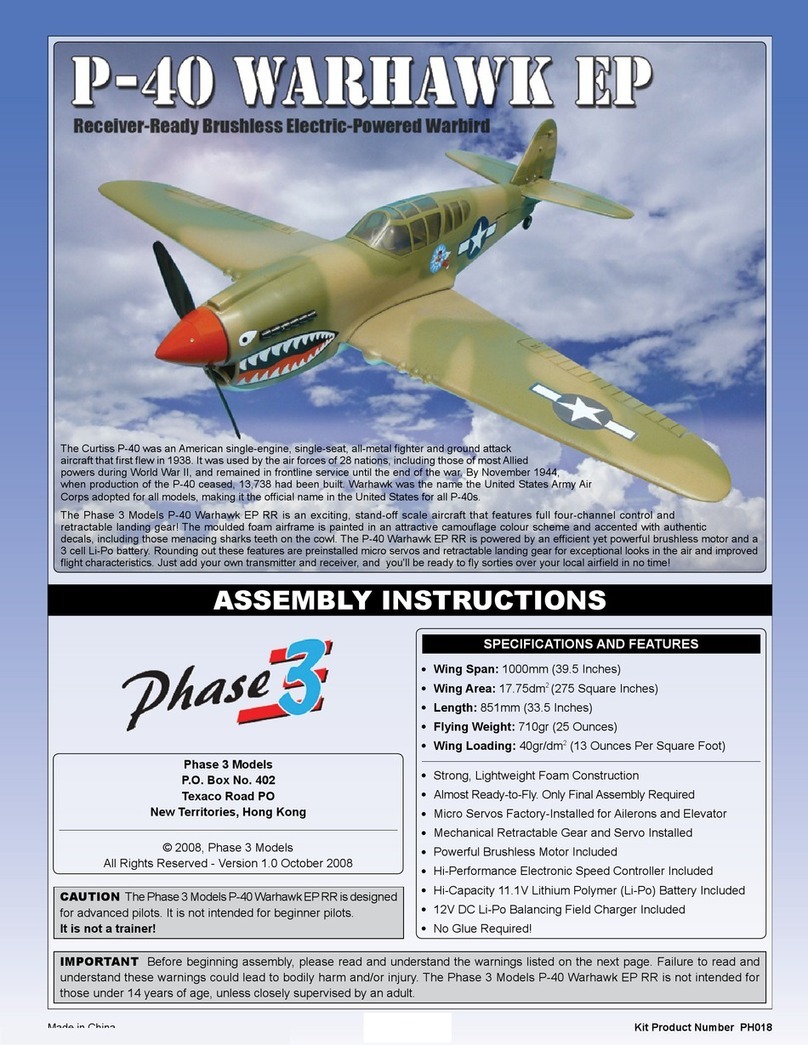
2
Thank you for purchasing the Phase3 Models P-51D Mustang EP. We're confident that the quality of your new airplane
meets and even exceeds your expectations. Before completing the final assembly of your new airplane, please carefully
read through this instruction manual in its entirety. Doing so will ensure your success the first time around!
This assembly manual is designed to guide you through the entire assembly process of your new airplane in the least amount of
time possible. Along the way you'll learn how to properly assemble your new airplane and also learn tips that will help you in the
future. We have listed some of our recommendations below. Please read through them before beginning assembly.
●Please read through each step before beginning assembly.
You should find the layout very complete and straightforward.
Our goal is to guide you through assembly without any of the
headaches and hassles that you might expect.
●There are check boxes next to each procedure. After you
complete a procedure, check off the box. This will help prevent
you from losing your place.
●Cover your work table with brown paper or a soft cloth, both to
protect the table and to protect the parts.
●Keep a couple of small bowls or jars handy to put the small
parts in after you open the accessory bags.
●We're all excited to get a new airplane in the air, but take your
time. This will ensure you build a straight, strong and great flying
airplane.
●If you come across this symbol ☞, it means that this is an
important point or an assembly hint.
INTRODUCTION
TABLE OF CONTENTS
This R/C airplane is not a toy! If misused or abused, it can cause serious bodily injury and/or damage to property. Fly only in open
areas and preferably at a dedicated R/C flying site. We suggest having a qualified instructor carefully inspect your airplane before
its first flight. Please carefully read and follow all instructions included with this airplane, your radio control system and any other
components purchased separately.
SAFETY WARNING
OUR GUARANTEE
Phase3 Models guarantees this kit to be free from defects in both material and workmanship at the date of purchase. This does not cover any
component parts damaged by use, misuse or modification. In no case shall Phase3 Models's liability exceed the original cost of the
purchased kit.
In that Phase 3 Models has no control over the final assembly or material used for final assembly, no liability shall be assumed for any damage
resulting from the use by the user of the final user-assembled product. By the act of using the final user-assembled product, the user accepts
all resulting liability.
Introduction ............................................................................................ 2
Safety Warning ...................................................................................... 2
Our Guarantee ...................................................................................... 2
Our Recommendations ......................................................................... 3
Lithium Polymer Battery Warnings - Please Read ............................... 4
Tools and Supplies Required ................................................................ 5
Important Information About EPP Foam .............................................. 5
Tips From the Pros ................................................................................ 5
Kit Contents ........................................................................................... 6
Fuselage Assembly ............................................................................... 7
Tail Wheel Installation ........................................................................... 9
Cockpit Deck Installation .................................................................... 11
Wing Assembly .................................................................................... 12
Wing Mounting .................................................................................... 14
Stabilizer Installation ........................................................................... 15
Motor Installation ................................................................................. 17
Control Systems Installation ............................................................... 19
Main Landing Gear Installation ........................................................... 22
Final Assembly .................................................................................... 23
Balance Point and Control Throws ..................................................... 25
Preflight Check and Safety ................................................................. 25
Replacement Parts ............................................................... Back Cover

































